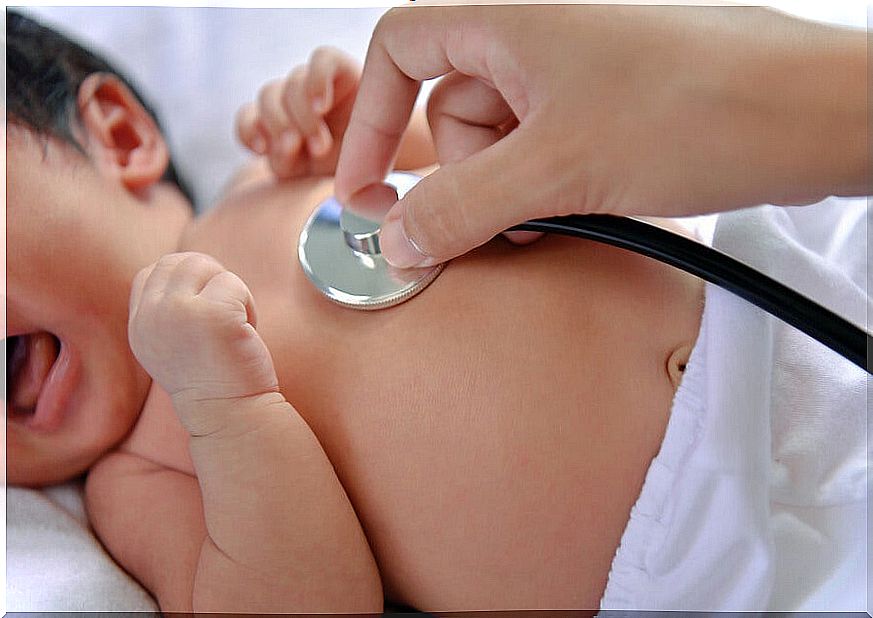What Is Congenital Heart Disease?

During the gestation stage, it may happen that the fetus has a malformation problem or congenital anomalies. Next, we will take a closer look at one of the most common: discover what congenital heart disease is.
The types of abnormalities present in fetuses can be diverse, from hand malformations to heart problems. Precisely thinking about this organ, a question often arises whose answer is very important. What is congenital heart disease?
The word heart disease refers to any disease of the heart and cardiovascular system. On the other hand, the term ‘congenital’ means ‘condition present at birth’.
Until now, it is clear what we mean when we talk about this pathology. However, behind it hides a world of information regarding why this happens to the fetus, what are the types of congenital heart disease, its symptoms and treatments.
Congenital heart disease
Previously, we defined congenital heart disease as a birth defect in which the baby’s heart has problems with its structure and cardiovascular function.
However, when it comes to congenital heart disease, it can actually encompass a large number of heart conditions. Although, in effect, it puts the life of the baby at risk during its first year of life, with the appropriate medical treatment this condition can be overcome.
For the American Academy of Pediatrics, between 1% and 2% of babies are born with birth defects. Meanwhile, according to the American Heart Association, 9 out of 1,000 babies have congenital heart disease at birth. These medical data indicate that, indeed, heart disease can be considered one of the most recurrent birth defects.

Its causes
Now we have to ask ourselves why this happens or what are its causes. As you know, the baby’s heart begins its development from the moment of conception. Its absolute development is completed by the eighth week of pregnancy.
It will be during that period when the malformation will occur. The main cause will be that all the steps necessary for a healthy heart to form were not met.
Why this happens is a mystery; In most cases where it occurs, it cannot be attributed to a specific reason and there is nothing the mother could have done to prevent it.
Types of congenital heart disease
Congenital heart disease can be classified in a number of ways. In cardiology, we talk about cyanotic and non-cyanotic causes. Next, we are going to exemplify each of the problems that the baby suffers:
- Reduced blood flow to the lungs: When this happens, the baby’s blood is starved of oxygen, and therefore the same thing happens throughout the body. This leads to the child being cyanotic and having a bluish hue on his skin.
- Too much blood flow to the lungs: This causes the lungs to work excessively and increases the child’s blood pressure.
- Poor blood flow through the body : Occurs when blood vessels are blocked and blood flow cannot get through properly.
Starting from these three main problems, cardiologists will specifically treat the malformations that produce them, whether in the arterial conduits, the atrial septal defect, the ventricular channels, the pulmonary valves, among many more. In many cases, more than one heart disease or a combination of several categories may be present.

Treatment for heart disease
Pediatric cardiologists will be in charge of treating each case of heart disease in a specific way. Certain types of these abnormalities can be detected even when the child is in the womb, while others may remain hidden for a time.
To treat these conditions, the specialist, together with a multidisciplinary team, will decide what will be the most effective treatment for the little one. The measures to be taken include from the exclusive use of medications to corrective operations, as required by each case and its severity.
A final aspect about the type of treatment is that, in the event that the child needs to be operated on, the doctors will decide the most appropriate time. In some cases, corrective operations must be done immediately; in others, on the other hand, it is considered to wait months or even years to do it.










